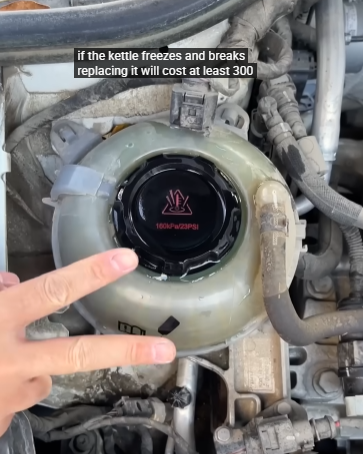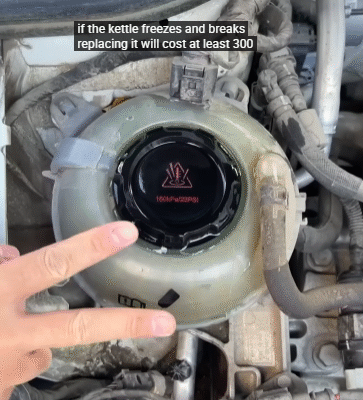
When winter sets in, the cold temperatures, icy roads, and harsh weather conditions can be very challenging—not only for you but also for your car. Snow, ice, and salt on the roads accelerate wear and tear, while freezing temperatures can impact your vehicle’s performance, battery life, and safety. For car owners, protecting your vehicle during winter is not just about convenience but also about safety, reliability, and extending the lifespan of your investment.
Below, we’ll explore in detail how to protect your car in winter with practical steps, preventative measures, and maintenance tips.
1. Check and Protect the Battery
Cold weather is one of the biggest enemies of car batteries. At freezing temperatures, a car battery can lose up to 35% of its strength, and at 0°F (-18°C), it may lose over 60%. If your battery is already weak, winter can leave you stranded.
What to do:
- Get the battery tested. Visit a mechanic or auto parts store for a load test. Replace the battery if it shows weakness.
- Keep terminals clean. Corrosion on battery terminals can reduce current flow. Clean them with a brush and baking soda solution if needed.
- Park in a garage if possible. A warmer environment helps prolong battery life.
- Carry jumper cables or a jump starter. Being prepared ensures you won’t get stuck in the cold.
2. Use the Right Engine Oil
Engine oil thickens in cold temperatures, making it harder for the engine to turn over. Using oil with the correct viscosity ensures your car runs smoothly.
What to do:
- Check your owner’s manual for winter oil recommendations. Many manufacturers suggest a lower viscosity oil in winter (e.g., 5W-30 instead of 10W-30).
- Change your oil and filter before winter if it’s due. Fresh oil improves lubrication and performance in the cold.

3. Protect Your Tires
Tires are your car’s only contact with the road, and in winter, traction is everything. Ice, snow, and slush require special care.
What to do:
- Switch to winter tires. Unlike all-season tires, winter tires are designed with deeper treads and special rubber compounds that stay flexible in freezing conditions.
- Check tire pressure regularly. For every 10°F drop in temperature, tire pressure drops about 1 PSI. Underinflated tires can reduce handling and increase wear.
- Rotate tires. This ensures even tread wear and better traction throughout the season.
- Inspect tread depth. Ensure at least 4 mm of tread depth for safe winter driving.
4. Keep Wipers and Washer Fluid Ready
Snow and slush quickly reduce visibility. Old wiper blades can streak or freeze, making driving dangerous.
What to do:
- Replace worn wiper blades with winter-specific ones. They are designed with rubber that resists freezing.
- Use a winter-grade washer fluid that won’t freeze at low temperatures.
- Keep an extra jug of washer fluid in the trunk for long trips.

5. Protect Your Car’s Exterior
Winter roads are often treated with salt and chemicals that prevent ice but also corrode your car’s paint and undercarriage.
What to do:
- Wash your car regularly. Focus on the undercarriage, wheel wells, and fenders where salt builds up.
- Apply a coat of wax. Wax provides a protective barrier against moisture and road salt.
- Use a car cover if parked outside. It shields your vehicle from snow, ice, and debris.
6. Check Your Cooling System and Antifreeze
It may sound strange, but your cooling system also protects your engine in winter. Antifreeze prevents the liquid from freezing and damaging your engine.
What to do:
- Ensure the coolant-to-water ratio is correct (typically 50/50).
- Have your system flushed and refilled if it hasn’t been serviced in a while.
- Check hoses for cracks or leaks—cold weather can worsen small problems.
7. Maintain Your Brakes
Winter roads are slippery, and brakes are critical to your safety. Any weakness can put you at risk.
What to do:
- Have your brake pads and rotors inspected.
- Listen for squeaking or grinding sounds that indicate wear.
- Test brakes in a safe, empty area after snowstorms to understand road grip.

8. Keep the Fuel Tank Full
A near-empty fuel tank in winter can lead to condensation inside the tank, which might freeze and block fuel lines.
What to do:
- Keep your fuel tank at least half full during the winter months.
- Consider adding a fuel line antifreeze treatment occasionally.
9. Take Care of the Interior
Winter protection isn’t just about the outside—it’s also about keeping the inside safe and comfortable.
What to do:
- Use rubber floor mats to protect from snow, slush, and salt.
- Vacuum regularly to prevent salt buildup, which can stain carpets.
- Keep blankets and emergency gear inside in case of breakdowns.
10. Prepare an Emergency Kit
No matter how well you prepare, winter driving can be unpredictable. Having an emergency kit in your car can be a lifesaver.
What to include:
- Ice scraper and snow brush
- Flashlight and extra batteries
- Jumper cables
- Warm blankets and gloves
- First-aid kit
- Small shovel
- Road flares or reflectors
- Extra washer fluid
- Bottled water and snacks

11. Mind Your Driving Habits
Even with all the precautions, how you drive in winter has a huge impact on safety and your car’s condition.
What to do:
- Warm up the car gently. Don’t rev the engine immediately after starting; let it idle for a minute.
- Drive slowly and maintain longer distances from other vehicles.
- Avoid sudden braking or acceleration to reduce the risk of skidding.
- Use gentle steering inputs—icy roads demand smooth control.
12. Protect Door Locks and Seals
Frozen locks and doors are common winter annoyances.
What to do:
- Spray a silicone-based lubricant on rubber seals to prevent them from freezing shut.
- Use a graphite-based lock lubricant instead of water-based ones.
- Keep a lock de-icer handy, but don’t store it inside the car—you won’t reach it when you’re locked out.
13. Use Engine Block or Battery Heaters (in Extreme Climates)
If you live in an area where temperatures regularly drop below -20°F (-29°C), additional measures are needed.
What to do:
- Install an engine block heater to keep the engine warm overnight.
- Consider a battery warmer or trickle charger to prevent battery drain.
Conclusion
Winter is tough on vehicles, but with the right care and preparation, you can protect your car and ensure it performs reliably throughout the cold months. Start with the essentials: a strong battery, proper tires, antifreeze protection, and clean visibility. Add protective measures like regular washes, wax, and interior care. Finally, always be prepared with an emergency kit and adjust your driving habits to the season.
By investing a little time and attention, you’ll not only keep your car safe from winter’s harsh conditions but also extend its lifespan and keep yourself and your passengers safe on the road.



